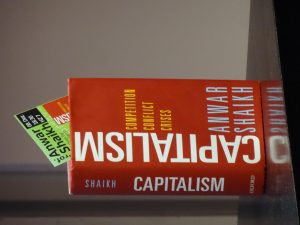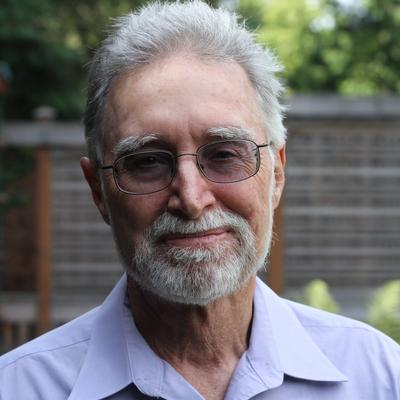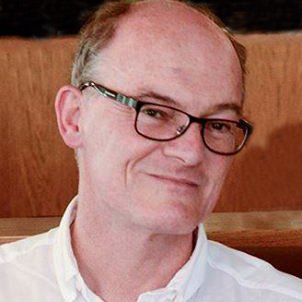Reflections on Chayanov’s The Theory of Peasant Economy
✑ ALEX M. THOMAS` ╱ ± 7 minutes


Alexander Vasilevich Chayanov’s essay on non-capitalist economic systems questioned the dominant approach of economic theorising which is conducted in the framework of capitalism.

Chayanow wishes for multiple economic theories.

Alexander Vasilevich Chayanov’s essay on non-capitalist economic systems questioned the dominant approach of economic theorising which is conducted in the framework of capitalism.
From: Alex Thomas, Feb. 17, 2020. ╱ About the author
Alex M. Thomas is Assistant Professor of Economics at Azim Premji
University, India. He both teaches and researches in the area of History of
Economic Thought. Besides publishing articles in journals such as the History of Economic Ideas and History of Economics Review, he
writes blog posts
occasionally. On twitter: @alexmthomas.
Alexander Vasilevich Chayanov, the Russian agricultural economist published the essay ‘On the Theory of Non-Capitalist Economic Systems’ in 1924 and Peasant Farm Organization in 1925, both in Russian. This blog post presents a selective summary of the English translations of these two works, one of the aims being to comment on Chayanov’s method of doing economics. He wrote around 60 books and essays during his lifetime. This blog post, it must be noted, is not an exhaustive survey of the essay and the book.
I
Chayanov’s essay on non-capitalist economic systems questioned the dominant approach of economic theorising which is conducted in the framework of capitalism. One of the characteristic features of the capitalist system is the presence of wage labour. So, how does such a theoretical framework understand peasant economies, where wage labour is non-existent? This is Chayanov’s question. Since labour is entirely provided by the peasant family, there exists no labour market and therefore no concept of wage labour. Moreover, the peasant family undertakes agricultural production (and engages in simple manufacturing) with the family labour and the surplus (or net product) arising from production cannot be resolved into wages and profits. The notions of profitability present in a family run enterprise, according to Chayanov, is very different from a capitalist enterprise. Chayanov terms the returns from the enterprise as the net product.
The required consumption of each family member is set by custom and habit. Chayanov computes an ‘internal equilibrium for the well-being of the family’ which is given by the intersection of their well-being and drudgery functions (p. 5). The gross product can be increased if more land is cultivated and/or an increase in labour intensity; remember, that the number of workers are given for any peasant farm organization. (This can change, perhaps in the very long-run, if the birth rate of the family is greater than its death rate.) The net product is arrived at by deducting the necessary consumption of the family and necessary consumption of the capital equipment from the gross product. The increase in labour intensity has definite physical limits; according to Chayanov, the family as a farm unit will increase labour intensity (drudgery) until the point when the net product is sufficient to meet the consumption needs of the workers and their dependants (children, parents and grandparents). The family’s access to land will depend on the land price and their ability to buy/lease more land will be constrained by their net product.
After laying out the basic relationships prevalent in a peasant farm, Chayanov concludes the essay by listing the various economic systems (p. 25). The extreme forms are capitalism and communism. In between, he introduces the family economy, slave economy and the feudal system (comprising landlord economy and peasant economy). Chayanow wishes for multiple economic theories catering to the needs of different economic-systems, as his last sentence in the essay shows:
II
In Chayanov’s 1925 work entitled Peasant Farm Organization, his team carries out a detailed analysis of the agricultural situation in various districts of Russia based on zemstvo statistics, state statistics, independent research and budget studies (p. 38). At the outset, Chayanov points out the ‘coexistence and evolution’ of the capitalist and non-capitalist forms. When the peasant as worker-entrepreneur is unable to make sufficient earnings (owing to a bad harvest, increased input cost or some other factor), he temporarily abandons his undertaking and becomes a wage-labour in order to avoid being unemployed (p. 40). A peasant farm, to reiterate, does not make use of hired labourers.
Given the trade-off between manual work and well-being, ‘the annual intensity of labor declines under the influence of better pay, because to remain the same it is absolutely essential that the productivity of the year’s labor (and equally the standard of well-being) should grow in proportion to the increase in the pay of a unit of labour’ (p. 80). In conclusion, as Chayanov states:
One of the problems of such a principle is the exclusion of the relationship between labour intensity and consumption needs of the labourers. For instance, when income increases, there might arise a heightened demand to consume more of luxury products. The consumption needs certainly have a lower limit or a floor, but it is not bounded from above. In other words, labour intensity and consumption needs are interrelated factors.
One final observation before we move to conclusions. Chayanov, with a view to aiding practical policy, was interested in finding the ‘optimal farm size’ because ‘the optimal combination gives the highest income, and any deviation from it gives the proprietor a reduced profit rate’ (p. 91). In part, and by large, the combination is based on the technical relations between inputs and outputs. Therefore, ‘[a]ny excess of production means available to labor or of land above the technically optimal level will be an excessive burden on the undertaking’ (p. 92). It is also on account of the technological relationship that the ‘volume of agricultural activity is not a simple arithmetic derivative of the size of area used’ (p. 94). Some of these technological relationships can be better grasped by taking recourse to ‘the basic laws of contemporary agricultural science’ (see especially pp. 138-47 for a rich account of crop rotation, manuring, etc).
III
First, Chayanov is dissatisfied with economic theory studying capitalist systems alone. But, (neoclassical) microeconomics can perhaps explain certain features of the peasant farm, especially the trade-off between drudgery and well-being (the backward bending labour supply curve is a good example). Also, the search for the optimal farm size can also be conducted by certain microeconomic procedures. One does not need to accept the marginal productivity theory of distribution which is a central feature of microeconomics. To put it differently, the ‘science of choice’ can explain the trade-offs which Chayanov is talking about by making appropriate changes in the parameters.
Secondly, treating the farm output as being ‘determined by the proportions between intensity of annual family labor and degree of satisfaction of its demands,’ as noted earlier, assumes them to be independent of each other which need not be the case. But in his credit, Chayanov undertakes a very detailed analysis of the farm households which provides content to the maximization problem. Also, the tabular and visual representation of the data is remarkable.
Finally, the co-existence of different economic organizations like capitalist and peasant farms is characteristic of economies like India. Often, they are called a dual economy. Self-employment, as opposed to wage employment is a significant feature of the Indian labour force; so is informal versus formal employment. Understanding their innate dynamics as well as their interrelationships is of much use. They require a combination of good theory, data collection methods, statistical analysis and an understanding of the socio-economic history of the particular locality.
I
Chayanov’s essay on non-capitalist economic systems questioned the dominant approach of economic theorising which is conducted in the framework of capitalism. One of the characteristic features of the capitalist system is the presence of wage labour. So, how does such a theoretical framework understand peasant economies, where wage labour is non-existent? This is Chayanov’s question. Since labour is entirely provided by the peasant family, there exists no labour market and therefore no concept of wage labour. Moreover, the peasant family undertakes agricultural production (and engages in simple manufacturing) with the family labour and the surplus (or net product) arising from production cannot be resolved into wages and profits. The notions of profitability present in a family run enterprise, according to Chayanov, is very different from a capitalist enterprise. Chayanov terms the returns from the enterprise as the net product.
The required consumption of each family member is set by custom and habit. Chayanov computes an ‘internal equilibrium for the well-being of the family’ which is given by the intersection of their well-being and drudgery functions (p. 5). The gross product can be increased if more land is cultivated and/or an increase in labour intensity; remember, that the number of workers are given for any peasant farm organization. (This can change, perhaps in the very long-run, if the birth rate of the family is greater than its death rate.) The net product is arrived at by deducting the necessary consumption of the family and necessary consumption of the capital equipment from the gross product. The increase in labour intensity has definite physical limits; according to Chayanov, the family as a farm unit will increase labour intensity (drudgery) until the point when the net product is sufficient to meet the consumption needs of the workers and their dependants (children, parents and grandparents). The family’s access to land will depend on the land price and their ability to buy/lease more land will be constrained by their net product.
After laying out the basic relationships prevalent in a peasant farm, Chayanov concludes the essay by listing the various economic systems (p. 25). The extreme forms are capitalism and communism. In between, he introduces the family economy, slave economy and the feudal system (comprising landlord economy and peasant economy). Chayanow wishes for multiple economic theories catering to the needs of different economic-systems, as his last sentence in the essay shows:
…we have no doubt that the future of economic theory lies not in constructing a single universal theory of economic life but in conceiving a number of theoretical systems that would be adequate to the range of present or past economic orders and would disclose the forms of their coexistence and evolution. (p. 28)
II
In Chayanov’s 1925 work entitled Peasant Farm Organization, his team carries out a detailed analysis of the agricultural situation in various districts of Russia based on zemstvo statistics, state statistics, independent research and budget studies (p. 38). At the outset, Chayanov points out the ‘coexistence and evolution’ of the capitalist and non-capitalist forms. When the peasant as worker-entrepreneur is unable to make sufficient earnings (owing to a bad harvest, increased input cost or some other factor), he temporarily abandons his undertaking and becomes a wage-labour in order to avoid being unemployed (p. 40). A peasant farm, to reiterate, does not make use of hired labourers.
His objective is not, in modern terms, macroeconomics.The peasant farm is an organization that makes use of family labour and receives a single labour income. And, the trade-off between physical effort and material results (already noted in the previous section) is re-emphasised (p. 41). Responding against criticisms against their employing the method of marginalist economics, Chayanov maintains that the trade-off between family member as consumer and as labourer (labour-consumer balance) determines the volume of family economic activity but he does ‘not at all consider it possible to deduce from this a whole system of the national economy’ (p. 46). His objective is not, in modern terms, macroeconomics. The concept of a family has its basis in ‘the purely biological concept of the married couple, living together with their descendants and the aged representatives of the older generation’ (p. 54). Moreover, the gross product of the labour farm includes income from ‘agriculture’ as well as ‘crafts and trades’ (p. 70).
Given the trade-off between manual work and well-being, ‘the annual intensity of labor declines under the influence of better pay, because to remain the same it is absolutely essential that the productivity of the year’s labor (and equally the standard of well-being) should grow in proportion to the increase in the pay of a unit of labour’ (p. 80). In conclusion, as Chayanov states:
Thus, any labor farm has a natural limit to its output, determined by the proportions between intensity of annual family labor and degree of satisfaction of its demands. (p. 82)
One of the problems of such a principle is the exclusion of the relationship between labour intensity and consumption needs of the labourers. For instance, when income increases, there might arise a heightened demand to consume more of luxury products. The consumption needs certainly have a lower limit or a floor, but it is not bounded from above. In other words, labour intensity and consumption needs are interrelated factors.
One final observation before we move to conclusions. Chayanov, with a view to aiding practical policy, was interested in finding the ‘optimal farm size’ because ‘the optimal combination gives the highest income, and any deviation from it gives the proprietor a reduced profit rate’ (p. 91). In part, and by large, the combination is based on the technical relations between inputs and outputs. Therefore, ‘[a]ny excess of production means available to labor or of land above the technically optimal level will be an excessive burden on the undertaking’ (p. 92). It is also on account of the technological relationship that the ‘volume of agricultural activity is not a simple arithmetic derivative of the size of area used’ (p. 94). Some of these technological relationships can be better grasped by taking recourse to ‘the basic laws of contemporary agricultural science’ (see especially pp. 138-47 for a rich account of crop rotation, manuring, etc).
III
First, Chayanov is dissatisfied with economic theory studying capitalist systems alone. But, (neoclassical) microeconomics can perhaps explain certain features of the peasant farm, especially the trade-off between drudgery and well-being (the backward bending labour supply curve is a good example). Also, the search for the optimal farm size can also be conducted by certain microeconomic procedures. One does not need to accept the marginal productivity theory of distribution which is a central feature of microeconomics. To put it differently, the ‘science of choice’ can explain the trade-offs which Chayanov is talking about by making appropriate changes in the parameters.
Secondly, treating the farm output as being ‘determined by the proportions between intensity of annual family labor and degree of satisfaction of its demands,’ as noted earlier, assumes them to be independent of each other which need not be the case. But in his credit, Chayanov undertakes a very detailed analysis of the farm households which provides content to the maximization problem. Also, the tabular and visual representation of the data is remarkable.
Finally, the co-existence of different economic organizations like capitalist and peasant farms is characteristic of economies like India. Often, they are called a dual economy. Self-employment, as opposed to wage employment is a significant feature of the Indian labour force; so is informal versus formal employment. Understanding their innate dynamics as well as their interrelationships is of much use. They require a combination of good theory, data collection methods, statistical analysis and an understanding of the socio-economic history of the particular locality.
| Top image: Alexander Chayanov, 2010. From: Wikimedia |
|---|






















Comments
Post a Comment
Your thoughts...